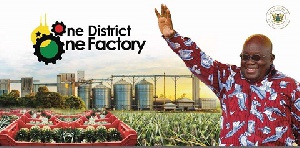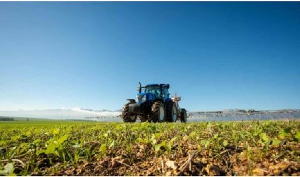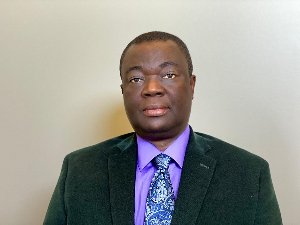The Central Region of Ghana has been blessed with vast natural resources some of which remain untapped. These when fully harnessed could turn the region’s fortunes around with attendant rippling effects on the national economy.
Its ancient city; Cape Coast, served as the first administrative capital of the then Gold Coast, and is now the Regional Capital.
The region is endowed with vast arable lands and rich deposits of natural resources – clay, gold, bauxite and stone quarries and also produces cash crops, such as oil palm, cocoa and cashew, cassava, pineapple and citrus plantations. Salt ponds also abound there.
With a population of about 2.5 million people, the historical region has some top world class monuments, including castles and forts; while the famous Kakum National Park, developed with a canopy walkway in 1995, serves as an additional tourism site giving both foreign and local visitors the opportunity to view its unique fauna and flora.
The region’s 168-kilometre pristine coastal stretch and beachfronts are a sight to behold and could attract huge numbers of tourists from across the globe if well developed and managed. That could significantly bring in more revenue for development.
Indeed, posterity will judge this generation if it fails to tap the enormous rich resources nature has bestowed on the region, referred to as the “heartbeat of tourism” in the country, and allowed them to lay fallow or negatively exploited, whilst its inhabitants struggle with economic hardship – live in squalor and poverty.
Additionally, the rich culture of the people is linked with the numerous annual festivals, including those of Winneba - “Aboakyer”, “Oguaa- Fetu Afahye”, “Edina -Bakatue” and Anomabo - “Okyir”.
To add colour to these festivals are the displays of the various “Asafo” companies always - in their lovely crafted traditional attires and accoutrements,which serve as baits of attraction for large numbers of tourists who visit the area, all year round.
Combined with its wealth of natural endowments are the numerous prestigious educational institutions - both secondary and tertiary - earning it the accolade, “the cradle of education” in Ghana. Mfanstipim Boys; Mfantsiman Girls; Wesley Girls; Adisadel Boys; St. Augustine’s Boys; the Academy of Christ the King; Holy Child Girls, the Ghana National and Apam are some of the Senior High Schools.
Again, the region has produced eminent personalities and statesmen and women who had left their footprints in the sands of time. Indeed, many others are still at the helm of affairs both in national and international bodies.
Notable among the personalities are the late Busumuru Kofi Annan, former Secretary General of the United Nations, Former President John Evans Atta Mills (of blessed memory), Mr Kweku Awotwe, the current boss of the Volta River Authority, Professor Naana Jane Opoku-Agyemang, a former Vice Chancellor of the University of Cape Coast and a former Minister of Education, to mention only a few.
Of course, it is worth mentioning the “Edwumawura”, Dr. Papa Kwesi Nduom, the founder of GN Companies, whose vast investments - hotels, banks, factories, a stadium and more – continue to provide employment for thousands of Ghanaians.
It is, therefore, a paradox that a region, blessed with both natural and quality human resources, could have about a third of its population wallowing in abject poverty.
It is more disturbing that at present, foreigners dominate in the exploitation of a large parts of the resources; leaving the citizens at the mercy these people.
With the introduction of the one district one factory (1D1F) initiative - the Government’s flagship industrialization policy, it is expected that the fortunes of the Central Region would change for the better and a different story told in the next few years to bring smiles on the faces of its citizens both home and abroad.
The initiative when well implemented would significantly raise their hope that there is a flourishing light at the end of the tunnel.
It is imperative that all defunct factories, including the Komenda Sugar Factory, Saltpond Ceramics, Asebu Fruit Processing Plant and the Bawjiase Starch Factory are revamped under the 1D1F to support the economy of the region.
District Potentials
From Ayanfuri in the West to Nyanyano in the East, all the 20 Metropolitan, Municipal and Districts have their own unique investment potentials that must be fully harnessed by sourcing for investors to develop every resource.
Opinions of Tuesday, 13 November 2018
Columnist: ghananewsagency.org















